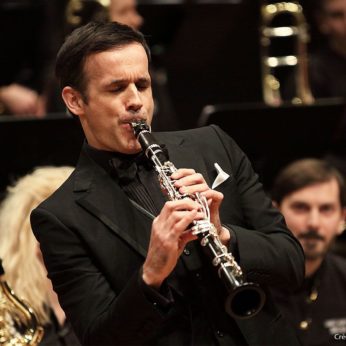Composer: György Ligeti (b. 1923 - d. 2006)
Performance date: 04/07/2015
Venue: St. Brendan’s Church
Composition Year: 1953
Duration: 00:12:19
Recording Engineer: Richard McCullough, RTÉ lyric fm
Instrumentation Category:Wind Quintet
Artists:
Phillipe Bernold -
[flute]
Gareth Hulse -
[oboe]
Romain Guyot -
[clarinet]
Hervé Joulain -
[horn]
Peter Whelan -
[bassoon]

Ligeti was lucky to
survive the Second World War. When the Nazis discovered that Hungary was
secretly negotiating with the Allies, they immediately took over the country
and set about eliminating the Jewish population. All of Ligeti’s family died in
the concentration camps, only his mother surviving, as she had been useful as a
doctor. Ligeti himself was captured several times by the Russians and escaped
by a series of extraordinary accidents in the chaos of attack and
counter-attack. Eventually he managed to recommence his studies in the Spartan
surroundings of post-war Budapest, where his teachers were Veress, Farkas and
Kodály while Kurtág was a fellow-student.
One of his early
works at the beginning of the fifties was a work for solo piano, Musica ricercata. Hungary was now under
Russian control so the infamous Zhadanov Decree, that had banned performances
of works by Shostakovich and Prokofiev, also ruled musical life in Eastern
Europe. So this work was written for Ligeti’s secretive bottom drawer with no
thought of pleasing anyone. His aim was to derive the maximum result from the
minimum of material, how well can one survive on almost nothing? Thus the first
piece consists entirely of just one note (A) plus its octave resolutions,
before a final resolution on to D in the last four bars. Each of the following
ten pieces contained one more pitch culminating in all twelve semitones in the final
piece. This work had to wait until 1969 for its premiere, long after Ligeti had
fled to the West in 1956. But as soon as he finished it, he began arranging
some of the set for wind quintet.
The composer is
very amusing about their first performance in the Socialist Realist Hungary of
1956, where he describes the audience of musicians and intellectuals as being
unsure whether they were permitted to enjoy the music. Only five Bagatelles were played on this occasion
as dissonances and chromaticism were still considered cosmopolitan and hostile
to the people and No.6 contained far too many minor seconds and had to be left
out. In the years since, the Bagatelles have
become a corner stone of the twentieth-century wind repertoire and one of the
most frequently performed and unequivocally enjoyable works by any contemporary
composer.
Each movement is
very short, the longest is barely three minutes. The con spiritu of the
opening Allegro is important as the
instruments chatter vivaciously amongst themselves, the wisp of a theme is
impossible to forget when it is delivered with such panache. The composer
describes the next three pieces as pseudo-folkloristic. The second is full of
strident outcries that you can imagine echoing in the mountains. The Allegro grazioso heard on its own would
never be associated with someone with as fierce a reputation as Ligeti. It is a
gentle cantilena with a delightful witty accompaniment. The limping dance music
of No. 4 is from the Balkans and the mesto
fifth movement is in memory of Bartók. And the directions for the final
movement also sum it up, capricious and full of life with just a hint of
galloping hooves. Do not miss the ironic postscript.
Copyright © 2024 West Cork Music. All rights reserved.
Designed and developed by Matrix Internet